

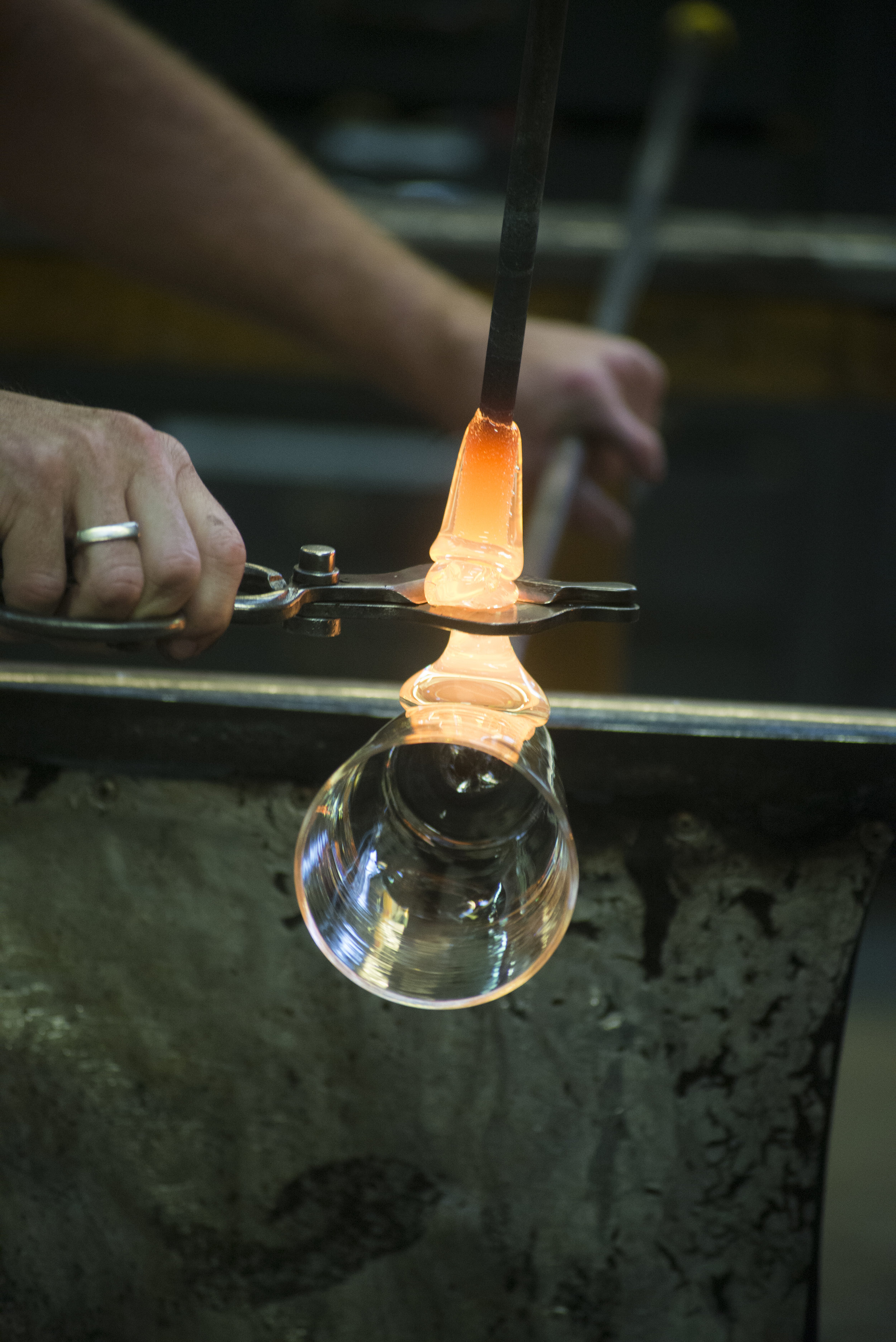



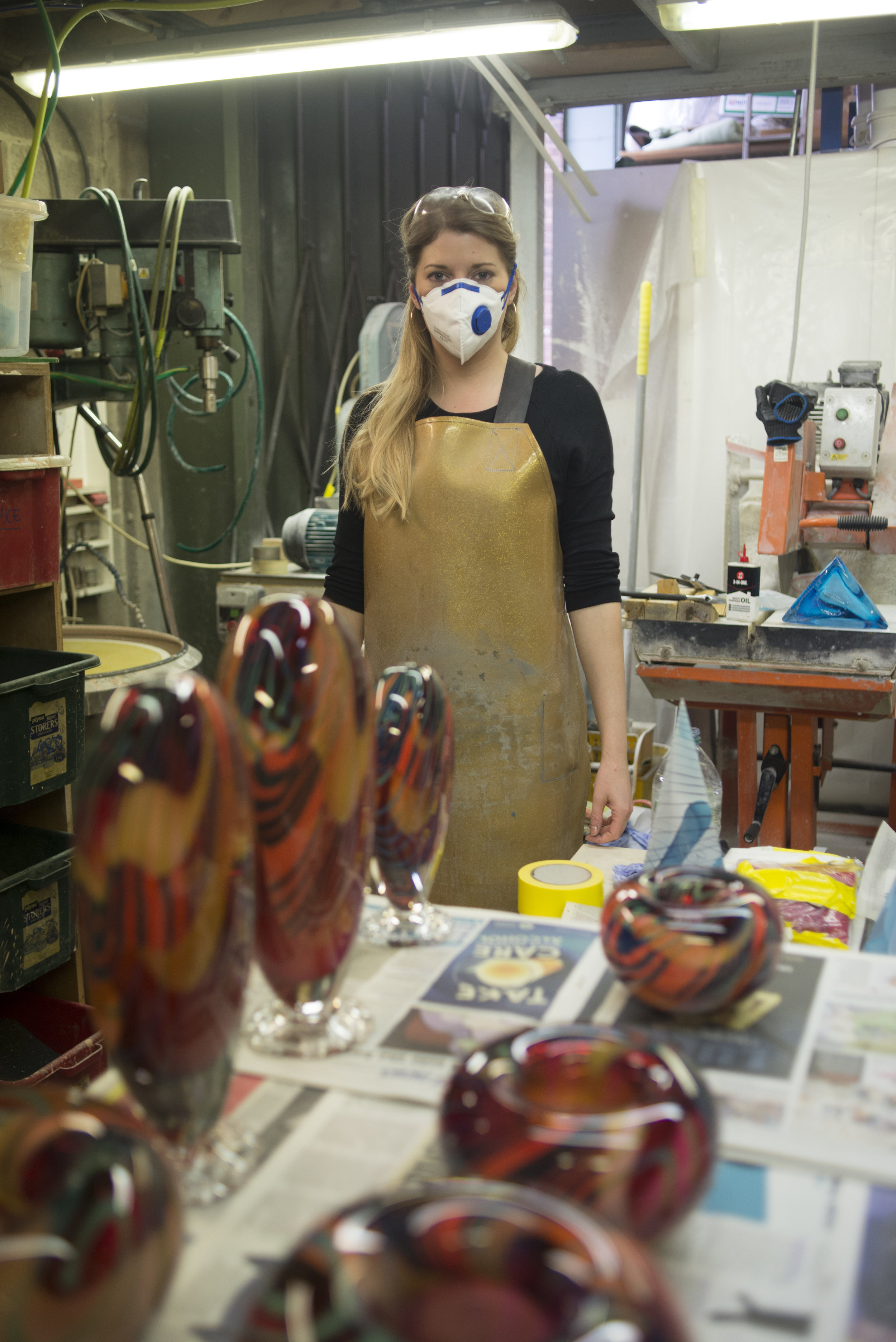



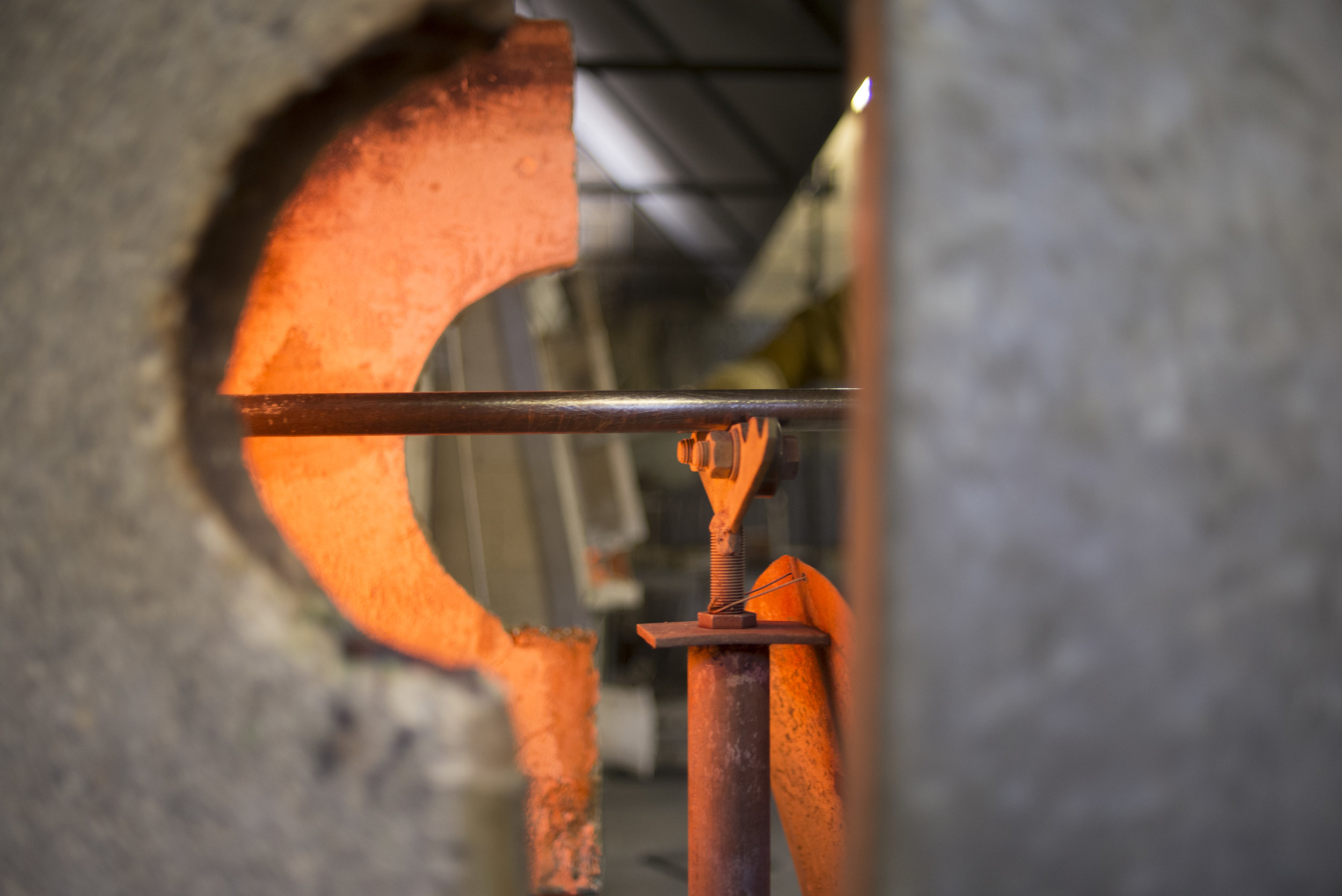











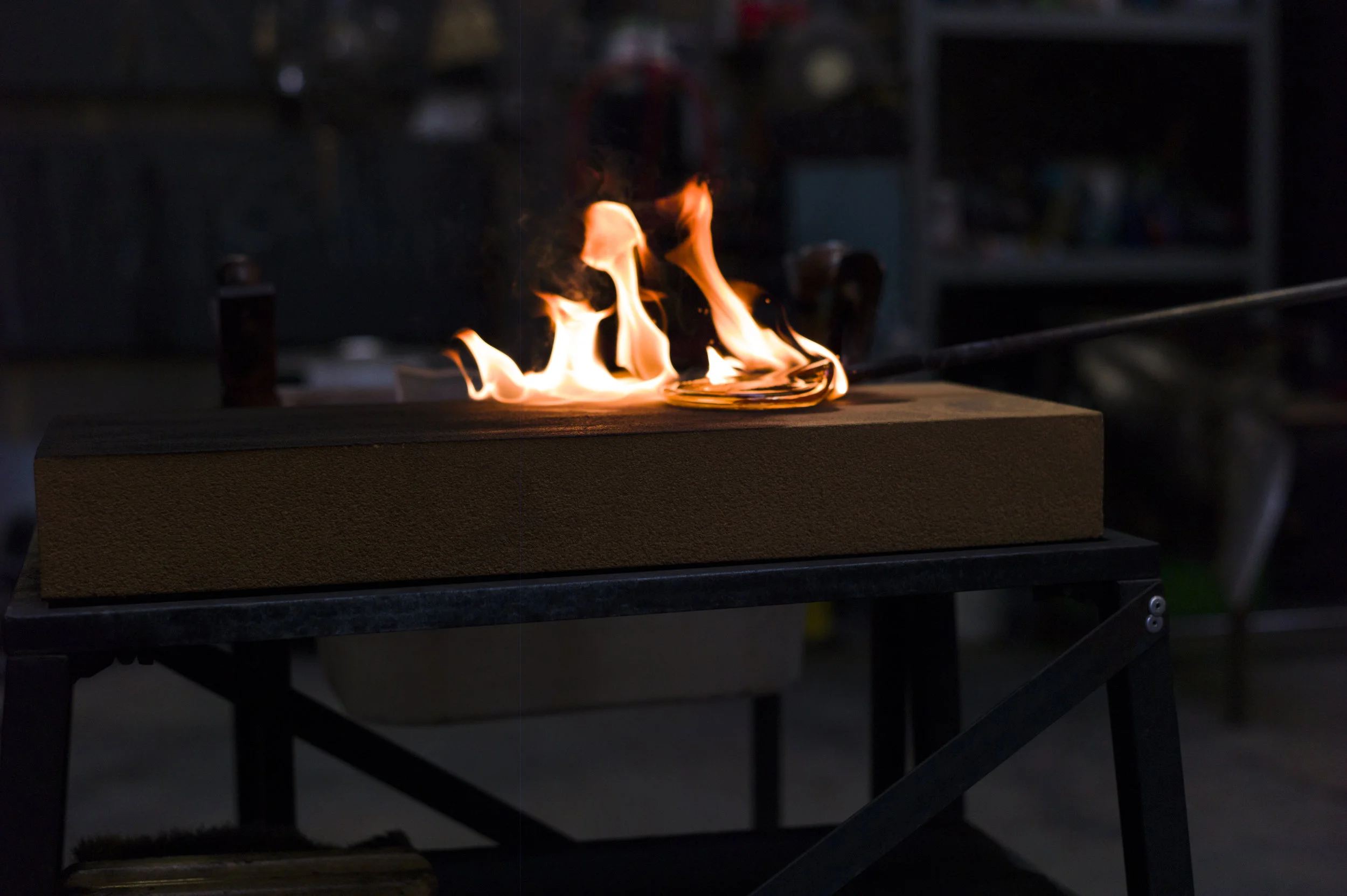





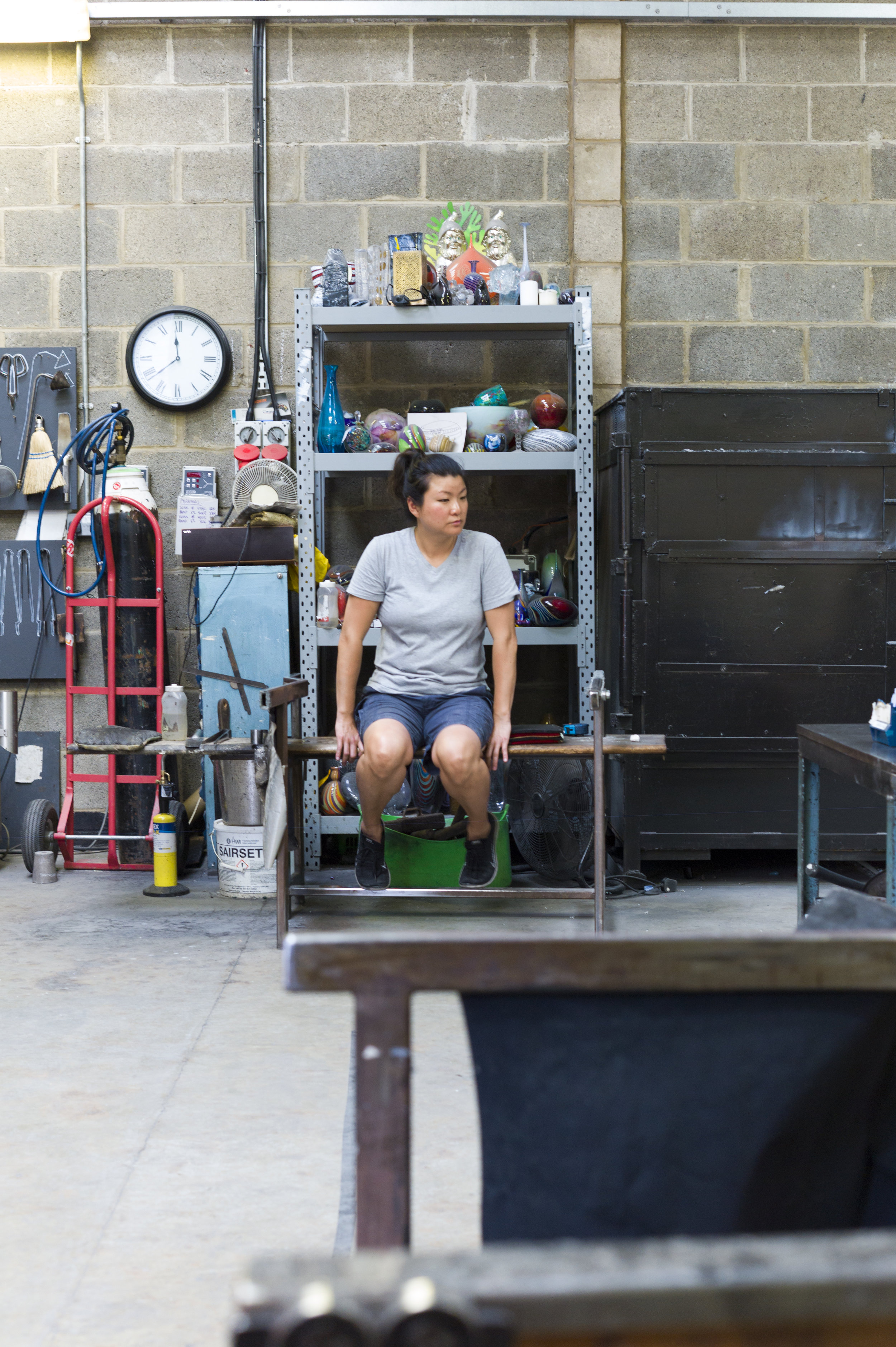







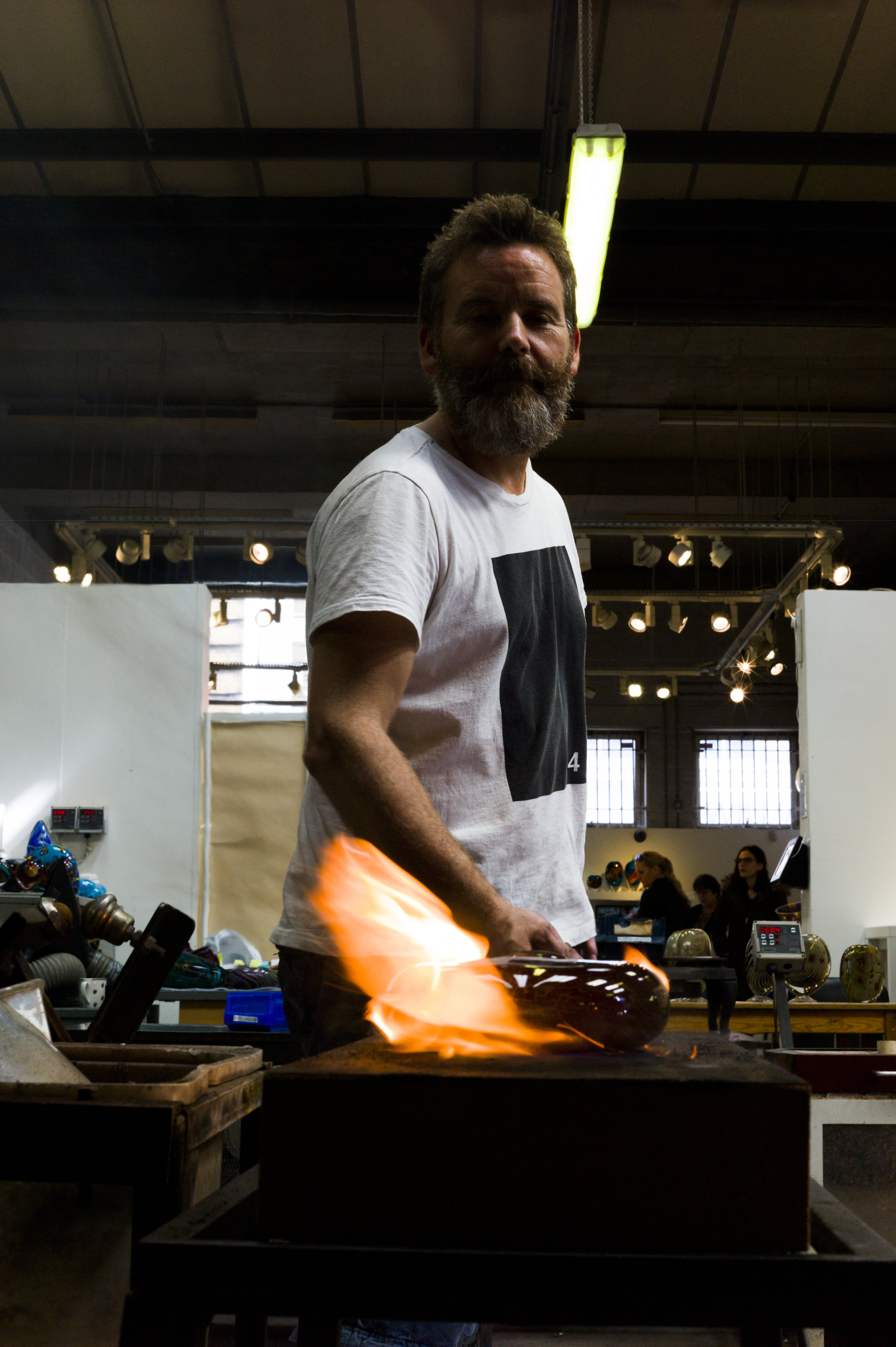





Your Custom Text Here
The imagined scene of a glassblower is as iconic within historic crafts as that of a blacksmith. But like that of the blacksmith our mind is filled with fictional representation from television and film through: period-dramas, or exotic glamorised scenes in travel documentaries. The magical forms of blown glass bubbling on the end of a blowpipe before being plunged into the heat of a Gloryhole as familiar in our mind as the bending of iron as it is smelt on the anvil of the smith; even if the art is never witnessed at all.
The term glassblower is now used to describe the whole practice of glass arts where blowing of glass might be involved, but historically this is incorrect. The use of blowing as a technique is very minimal in the formation of most glass items; selective heating, gravity and to physically shape the glass using Tongs, Pads, Paddles and Blocks is most of the initial practice, with the finishing of the work being more time consuming through cutting, polishing and acid-treating the work cold afterwards.
Many call themselves Glass Artist as apposed to glassblower, but perhaps the correct term would be Glasswright; a term used to describe “A glassmaker and mender of glassware” (WorldThroughTheLens.com, 1995) with the Glassblower being someone who worked within their studio working solely to blow the glass.
At one-time glass studios were a large and important part of British industry but through the early twentieth century numbers of studios dwindled with the advances in automated production and more affordable products from elsewhere in the world caused many to go out of business. Then, in the 1970s larger studios started to appear again, focusing more on artisan rather than practical pieces. Among the most famous of these is the studio of Peter Layton, a Glasswright based in London, and director of London Glassblowing a studio utilised by thirteen artists working on individual and personal pieces for retail and commission, or for exhibition.
Each artist pushes their skills as far as possible experimenting with shape and form, the line between function and fine art; and in the case of Layton, creating class with the detail of painting. To do so involves a wide ranger of techniques that these artists have described as boring or repetitive due to their use being the norm in their trade, oblivious that to the visitors to the studio coming in to watch that these same techniques are as wonderous as the subtleties of Bach’s concertos, or the balance of flavours in fine-dining.
Much like many other crafts explored through The British Heritage Project, the skills and equipment of a Glasswright is familiar from other trades. The wooden blocks and their use is like the Forms of a Silversmith or Potter, the glass is cooled down slowly in a kiln, exactly the same as the kiln used by a ceramicist firing their finished clay ready to be glazed. There are artists working in the studio almost every day of the year, the furnace takes so long to get to its necessary 1200 degrees Celsius that it is only turned off and allowed to cool down once a year for cleaning and maintenance.
In this photographic study we look at the subtleties in their working practice, the communication and collaboration on a project and explore the lesser known elements of one of Britain’s oldest of industries. This is part of The British Heritage Project, an extended study of traditional trades and crafts in Britain and those who practice them.
The imagined scene of a glassblower is as iconic within historic crafts as that of a blacksmith. But like that of the blacksmith our mind is filled with fictional representation from television and film through: period-dramas, or exotic glamorised scenes in travel documentaries. The magical forms of blown glass bubbling on the end of a blowpipe before being plunged into the heat of a Gloryhole as familiar in our mind as the bending of iron as it is smelt on the anvil of the smith; even if the art is never witnessed at all.
The term glassblower is now used to describe the whole practice of glass arts where blowing of glass might be involved, but historically this is incorrect. The use of blowing as a technique is very minimal in the formation of most glass items; selective heating, gravity and to physically shape the glass using Tongs, Pads, Paddles and Blocks is most of the initial practice, with the finishing of the work being more time consuming through cutting, polishing and acid-treating the work cold afterwards.
Many call themselves Glass Artist as apposed to glassblower, but perhaps the correct term would be Glasswright; a term used to describe “A glassmaker and mender of glassware” (WorldThroughTheLens.com, 1995) with the Glassblower being someone who worked within their studio working solely to blow the glass.
At one-time glass studios were a large and important part of British industry but through the early twentieth century numbers of studios dwindled with the advances in automated production and more affordable products from elsewhere in the world caused many to go out of business. Then, in the 1970s larger studios started to appear again, focusing more on artisan rather than practical pieces. Among the most famous of these is the studio of Peter Layton, a Glasswright based in London, and director of London Glassblowing a studio utilised by thirteen artists working on individual and personal pieces for retail and commission, or for exhibition.
Each artist pushes their skills as far as possible experimenting with shape and form, the line between function and fine art; and in the case of Layton, creating class with the detail of painting. To do so involves a wide ranger of techniques that these artists have described as boring or repetitive due to their use being the norm in their trade, oblivious that to the visitors to the studio coming in to watch that these same techniques are as wonderous as the subtleties of Bach’s concertos, or the balance of flavours in fine-dining.
Much like many other crafts explored through The British Heritage Project, the skills and equipment of a Glasswright is familiar from other trades. The wooden blocks and their use is like the Forms of a Silversmith or Potter, the glass is cooled down slowly in a kiln, exactly the same as the kiln used by a ceramicist firing their finished clay ready to be glazed. There are artists working in the studio almost every day of the year, the furnace takes so long to get to its necessary 1200 degrees Celsius that it is only turned off and allowed to cool down once a year for cleaning and maintenance.
In this photographic study we look at the subtleties in their working practice, the communication and collaboration on a project and explore the lesser known elements of one of Britain’s oldest of industries. This is part of The British Heritage Project, an extended study of traditional trades and crafts in Britain and those who practice them.
©Tom Warland 2024